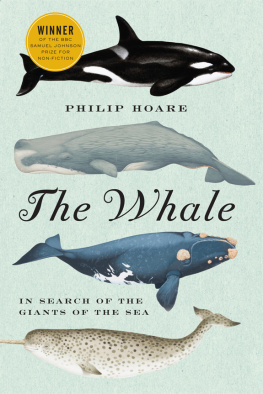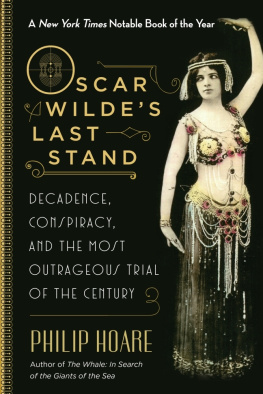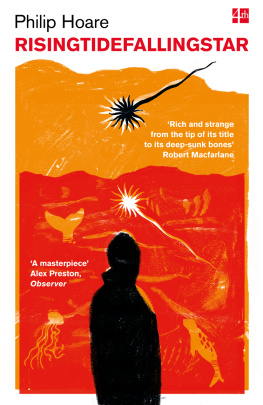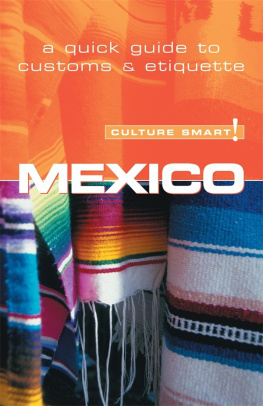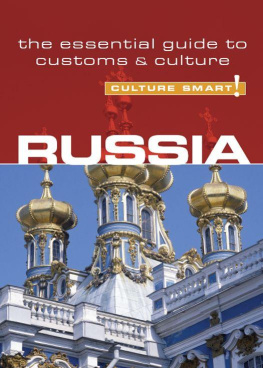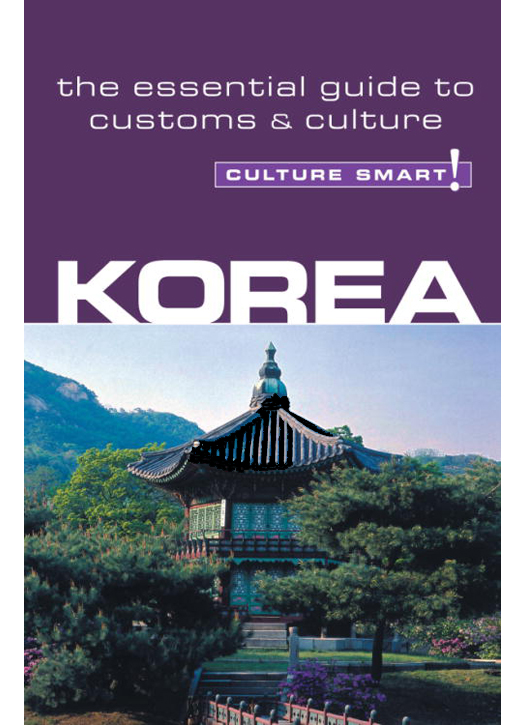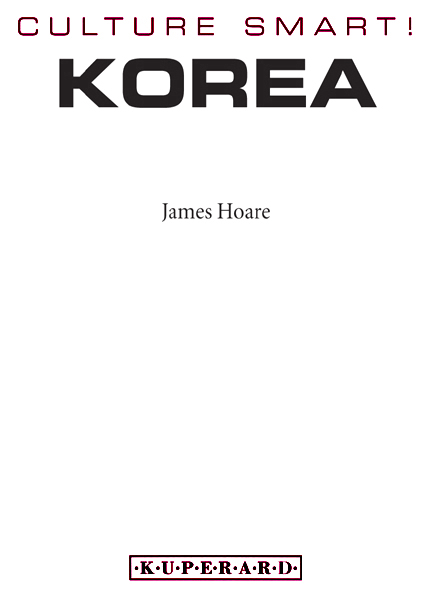About the Author
JAMES HOARE spent over thirty years in the British Diplomatic Service, with postings to Seoul and Beijing. His last job was Charg DAffaires in Pyongyang, North Korea, where he established the first-ever British Embassy. He has written numerous books and articles about East Asia, including Embassies in the East: The Story of the British and Their Embassies in China, Japan and Korea from 1859 to the Present (1999), and, with his wife, Susan Pares, Conflict in Korea: An Encyclopedia (1999).
The Culture Smart! series is continuing to expand.
For further information and latest titles visit
www.culturesmartguides.com
The publishers would like to thank CultureSmart!Consulting for its help in researching and developing the concept for this series.
CultureSmart!Consulting creates tailor-made seminars and consultancy programs to meet a wide range of corporate, public-sector, and individual needs. Whether delivering courses on multicultural team building in the USA, preparing Chinese engineers for a posting in Europe, training call-center staff in India, or raising the awareness of police forces to the needs of diverse ethnic communities, it provides essential, practical, and powerful skills worldwide to an increasingly international workforce.
For details, visit www.culturesmartconsulting.com
CultureSmart!Consulting and CultureSmart! guides have both contributed to and featured regularly in the weekly travel program Fast Track on BBC World TV.
contents
Chapter 1:
Chapter 2:
Chapter 3:
Chapter 4:
Chapter 5:
Chapter 6:
Chapter 7:
Chapter 8:
Chapter 9:
Map of Korea
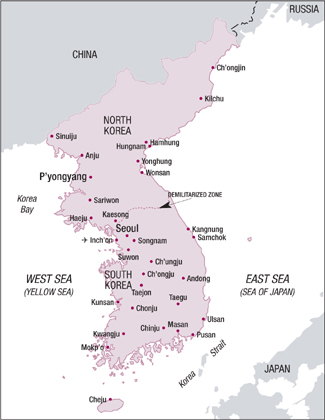
introduction
The past century has not been kind to the people of the Korean peninsula. Nearly one hundred years ago, Japans defeat of Russia paved the way for the Japanese protectorate in Korea. Then in 1910, the Japanese annexed Korea as a full-scale colony. Liberation in 1945 brought not independence as all Koreans had hoped, but the division of the peninsula that has lasted until today. North Korea attempted to reunify Korea by force in 1950. Outside intervention saved both Korean states from extinction, but the war intensified the division.
Only in the last decade has there been any significant move to heal the wounds of the past. The issue is complicated by the very different conditions of the two Koreas. The North remains a dictatorship, and having once led in economic development and industrialization, is in economic decline. The South, by contrast, once viewed as an economic disaster, built a modern economy in the 1960s and 1970s, weathered the financial storms of the 1990s, and seems well on the road to democracy. The two Koreas are now interacting as never before. Major issues remain, such as the role of outside powers and North Koreas apparent pursuit of a nuclear weapons program. Yet the future looks more positive than it has for years.
The 1988 Seoul Olympics and the 2002 World Cup, shared with Japan, have helped to increase knowledge about South Korea, but have not overcome widespread ignorance about the Korean people and their culture. Yet those who visit Korea, whether North or South, will find a place of great interest with much to offer. Koreans, when not constrained by politics or other considerations, are friendly and sociable. The peninsula has areas of outstanding natural beauty. The Souths cities, if not always beautiful, are vibrant and alive. The North, while very different, is well worth getting to know.
Culture Smart! Korea shows how Koreans think and act, and the pitfalls to avoid, and introduces some of the delights of the peninsula. It is the product of an involvement that stretches back to the early 1970s, and of my residence in both North and South Korea. It derives partly from a little book called Simple Guide to Korea: Customs and Etiquette, which my wife and I wrote. The European Department of the North Korean Ministry of Foreign Affairs, to whom we gave a copy, made this required reading for all the staff of the department, since it provided real insights into Korean thinking and behavior. I hope that Culture Smart! Korea will do the same for many other readers.
Key Facts: South Korea
| Official Name | Republic of Korea | Daehan minguk |
| Capital City | Seoul | Pop. 10.4 million |
| Major Cities | Inchon, Taejon, Taegu, Pusan, Kwangju, Ulsan |
| Area | 38,131 sq. miles (98,759 sq. km) |
| Climate | Continental, tempered by maritime influences |
| Population | 47.6 million (2002) |
| Ethnic Makeup | Korean: 100% |
| Government | Democracy, with executive president and unicameral legislature (National Assembly) |
| Borders | Demilitarized Zone between North and South Korea: 151 miles (240 km) |
| Currency | Won, divided into 100 chon, but the latter has gone out of usage. The South Korean won has a different exchange value from the North. | Coins are Won 1, 5, 50, 100, and 500. The first two have practically disappeared. Notes are Won 1,000, 5,000, and 10,000. |
| Language | Korean. People who attended school before August 1945 will have learned Japanese. |
| Religion | Traditional: Buddhism, shamanism, and Confucianism. Since the eighteenth century, Christianity has grown, and over a quarter of the population is now Christian. There are a number of new religions, and Islam has about 40,000 followers. |
| Media | Thriving press, radio, and TV. Widespread use of computers, the Internet, and cell phones. There are three English-language dailies: Korea Herald, Korea Times, and the Joongang Ilbo supplement to the International Herald Tribune. |
| Electricity | 220v, although some 110v outlets may still be found. US-style plugs are the norm. |
| Time | GMT + 8 |
Key Facts: North Korea
| Official Name | Democratic Peoples Republic of Korea | Choson minjujui inmin konghwaguk |
| Capital City | Pyongyang | Pop. 2 million |
| Major Cities | Nampo, Kaesong,Wonsan, Shinuiju, Hamhung |
| Area | 46,768 sq. miles (121,129 sq. km) |
| Climate | Continental, tempered by maritime influences |
|


